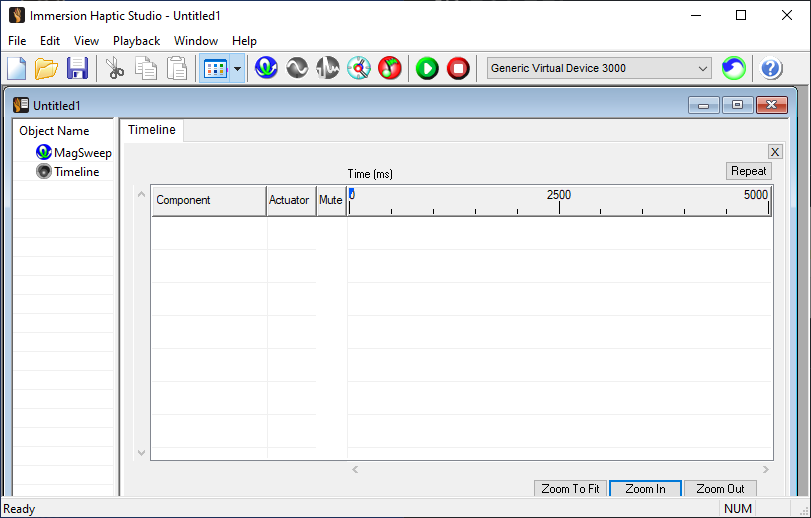Haptic Studio (Immersion)

Tool Summary
| Metadata | |
|---|---|
| Release Yearⓘ The year a tool was first publicly released or discussed in an academic paper. | 2003 |
| Platformⓘ The OS or software framework needed to run the tool. | Windows |
| Availabilityⓘ If the tool can be obtained by the public. | Unavailable |
| Licenseⓘ Tye type of license applied to the tool. | Proprietary |
| Venueⓘ The venue(s) for publications. | N/A |
| Intended Use Caseⓘ The primary purposes for which the tool was developed. | Haptic Augmentation |
| Hardware Information | |
|---|---|
| Categoryⓘ The general types of haptic output devices controlled by the tool. | Vibrotactile |
| Abstractionⓘ How broad the type of hardware support is for a tool.
| Consumer |
| Device Namesⓘ The hardware supported by the tool. This may be incomplete. | TouchSense Devices |
| Device Templateⓘ Whether support can be easily extended to new types of devices. | No |
| Body Positionⓘ Parts of the body where stimuli are felt, if the tool explicitly shows this. | N/A |
| Interaction Information | |
|---|---|
| Driving Featureⓘ If haptic content is controlled over time, by other actions, or both. | Time |
| Effect Localizationⓘ How the desired location of stimuli is mapped to the device.
| Device-centric |
| Non-Haptic Mediaⓘ Support for non-haptic media in the workspace, even if just to aid in manual synchronization. | Audio |
| Iterative Playbackⓘ If haptic effects can be played back from the tool to aid in the design process. | Yes |
| Design Approachesⓘ Broadly, the methods available to create a desired effect.
| Direct, Procedural, Additive |
| UI Metaphorsⓘ Common UI metaphors that define how a user interacts with a tool.
| Track, Keyframe |
| Storageⓘ How data is stored for import/export or internally to the software. | WAV, Haptic Studio Files |
| Connectivityⓘ How the tool can be extended to support new data, devices, and software. | None |
Additional Information
Haptic Studio supports the creation of several kinds of base effects either from scratch or from a WAV file. These base effects can be of types MagSweep (continuous vibration along an attack-sustain-release or ASR envelope), Periodic (regular pulses that are contained in an ASR envelope), or Waveform (statically loaded from a WAV file). They can be assigned to a timeline element where they can be linked to different actuators, arranged in time, and have their applicable parameters modified. Individual effects (“components”) and timelines can be played back, refined, and exported when complete.
For more information, consult the Immersion website.